Media | Articles
What does a black-sheep Mustang share with the Monkeemobile?
Often when I’m photographing a car at a major auto show, I’ll overhear someone say something completely inaccurate about that particular model. When the show in question is in the Detroit area, such off-the-cuff claims are rather risky. One might find oneself spouting nonsense next to someone who had a hand in building that car—who worked on the assembly line that produced it or who ran the company that sold it. (Bob Lutz, who lives in nearby Ann Arbor, sometimes shows his cars at Detroit-area events.)
If, when admiring George Conrad’s highly customized 1978 Mustang II at the 2023 Detroit Autorama, you offered a snarky comment about that infamous pony car, the guy who designed it probably heard you.
Conrad’s “King Coyote” was my sentimental favorite to win Autorama’s top prize this year. Officially, this most coveted award in custom-car building is the Don Ridler Memorial Award, but most refer to it simply as “the Ridler.” It is, as fellow Hagerty writer Aaron Robinson put it, the Nobel Prize of hot-rodding.
I’m not an astrology enthusiast, but while I was running around the floor of Huntington Place (the former Cobo Hall) trying to locate all of the “Great Eight” Ridler finalists, some planetary bodies must have aligned. Who should I find admiring the custom Mustang II? None other than Buck Mook, who was responsible for the exterior styling the three-door fastback Mustang II—the factory version.
The car’s owner, George Conrad, invited Buck into the display, where they went over the fine points of King Coyote for quite some time. You could tell that Conrad was really jazzed to talk with one of his car’s original creators and very pleased that Mook appreciated and admired his work.
Marketplace
Buy and sell classics with confidence
While all that seems rather normal for a Detroit car show, I’m not sure introductions like that ever happen at car shows in other cities.
Conrad’s Mustang II wasn’t the only car on the Autorama floor with which Mook had a connection, either. Among the special displays at this year’s Autorama were a collection of George Barris cars, including the Munsters Koach (signed by all the cast members), Drag-u-la, and the Batmobile from the ’60s television show. All of the Barris cars were also signed by George himself, who undoubtedly liked to put his name on things.
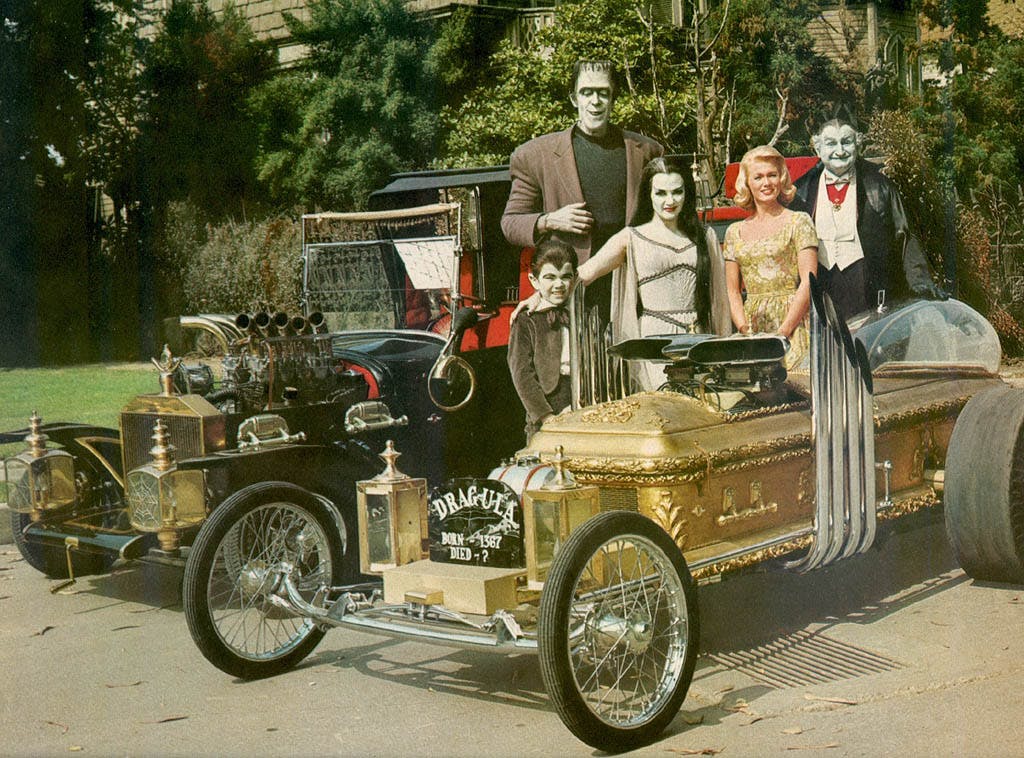
Also on display was a collection of cars built by the Motor City’s legendary Alexander brothers, Larry and Mike, including one of the most famous customs ever, the Dodge Deora, whose fame was increased when it became one of the first 16 Hot Wheels cars made. The Deora’s original designer, Harry Bentley Bradley, who sketched the Deora on the sly, soon left GM for a job at Mattel, designing those same 16 Hot Wheels.
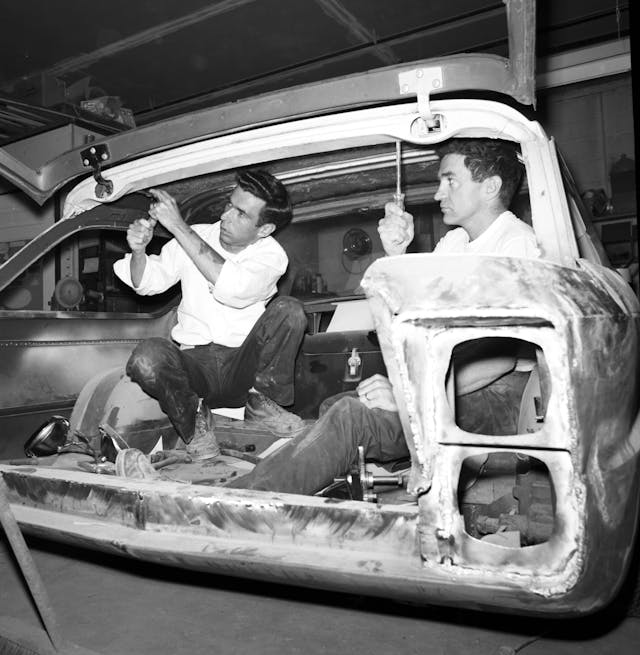
I was fortunate to have a lengthy phone conversation with Mike Alexander before he passed in 2014. He told me that Detroit customizers originally had a hard time breaking into the hot-rod magazines, most of which were based in southern California. Detroit customs were truly radical, in part out of necessity. Back in the ’50s and ’60s, cars had little to no rust protection and Michigan salts its roads in the winter. With so much sheetmetal already missing, the “A Brothers” had a free hand to make radical changes to the bodywork of relatively modern, late-model cars.
Out in southern California, though, there was no shortage of rust-free cars from twenty or even thirty years ago. Thus, T-buckets (Model Ts), highboys (Model As), and Deuce Coupes (’32 Fords) became the standard West Coast format. To California car culture, the Alexanders’ creations were just too wild.
Enter California car customizer George Barris. One year, Barris brought his XPAK-400 hovercraft to the Detroit Autorama. Founded in 1952, the show enjoyed national prominence by the ’60s. However, when it arrived in Detroit, the hovercraft wouldn’t work.
(Barris is, as you may recall, the same guy who used paint-roller trays for the hood scoops on the “his and hers” Mustangs he made for Sonny and Cher.)
Barris asked the show organizers to point him to the best mechanics in town. They sent him to the Alexander brothers, and Mike and Larry got Barris’ hovercraft working in time for Autorama.

When George got back to Los Angeles, he showed the car magazines’ editors and publishers photos of the Alexander brothers’ hot rods. Once he described their shop as the “East Coast Division of Barris Industries,” the publications started to pay attention.
(Like I said, George Barris liked to put his name on things.)
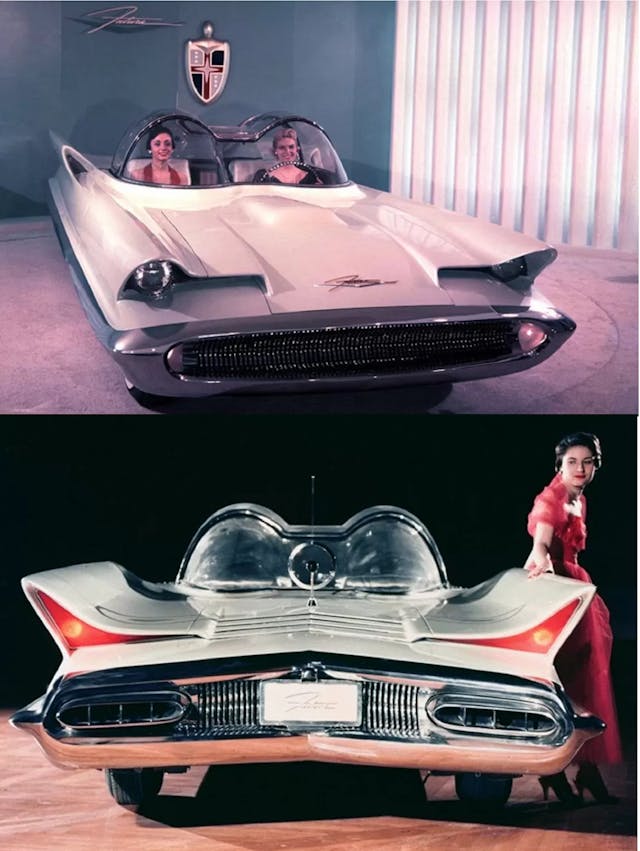
If you look up the history of the Barris Batmobile, you may see George Barris described as the car’s creator, designer, or builder, and sometimes as all three. While all the ticky-tacky geegaws added to the car were probably George’s idea, Barris’ shop didn’t build the Batmobile. It’s not even clear how much, if any, input he had in the car’s design.
The TV show’s producers originally approached customizer Dean Jeffries to make the Batmobile, but the shooting schedule for the show was moved up and Jeffries didn’t have enough time to complete the car. The studio turned to Barris, who a year earlier had managed to purchase Ford’s Lincoln Futura show car for just one dollar.
After finishing its duties on the car show circuit, the Futura ended up in Hollywood, where it appeared in some movies and subsequently ended up in storage in Barris’ parking lot. Much of the Batmobile’s styling in terms of basic shapes and proportions comes directly from the Futura, including that distinctive double-bubble top, all of which was designed by Ford styling chief Bill Schmidt and designer John Najjar and hand-built by Ghia, so Barris can’t take credit.
Pressed for time, Barris handed the Futura to Bob Cushenberry, who turned the languishing Futura into the Batmobile. Barris did submit some drawings to the studio, however, which its artists revised.

Between the Futura, the studio’s artists, and Cushenberry, it’s hard to say how large a role George Barris had in creating the Batmobile.
It was a similar story with Barris and another automotive icon of ’60s pop culture. Columbia Screen Gems, the studio responsible for The Monkees, did contract with Barris to pen the Pontiac GTO–based Monkeemobile, but it’s widely known that Jeffries actually did the build.

As it happens, the original Monkeemobile is owned by a Detroit-area collector and was also on display at this year’s Autorama, though separately from the Barris cars. With both Barris and Alexander brothers cars on display in Detroit, it was only natural for me to tell Buck Mook the story about Barris Industries’ East Coast Division.
He laughed. “You know, I designed the Monkeemobile.”
Wasn’t that Dean Jeffries?
“Jeffries made it, but I drew it,” Mook insisted.
Since Harry Bradley had to hide his work with the Alexander brothers from his corporate superiors at GM, I asked Mook if he had to do the same at Ford. “No, I was still a student at Art Center [College of Design].” Mook told me that he also drew the “Black Beauty” Green Hornet TV show car.
The Mustang II often ends up on clichéd “worst cars of all time” lists. I wonder how the people who make those lists would react when if they knew that car’s designer also designed two of the most famous rides in ’60s pop culture.
***
Check out the Hagerty Media homepage so you don’t miss a single story, or better yet, bookmark it. To get our best stories delivered right to your inbox, subscribe to our newsletters.
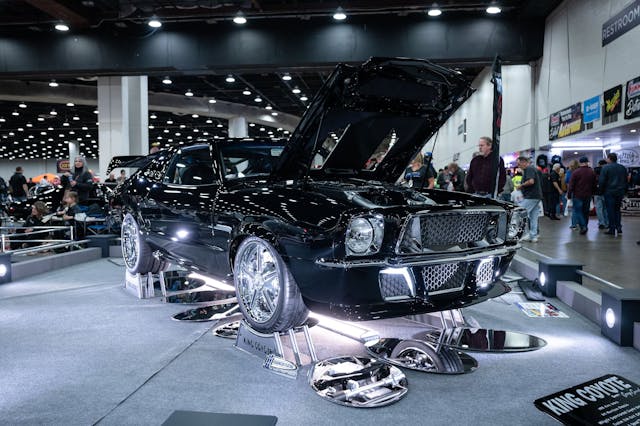
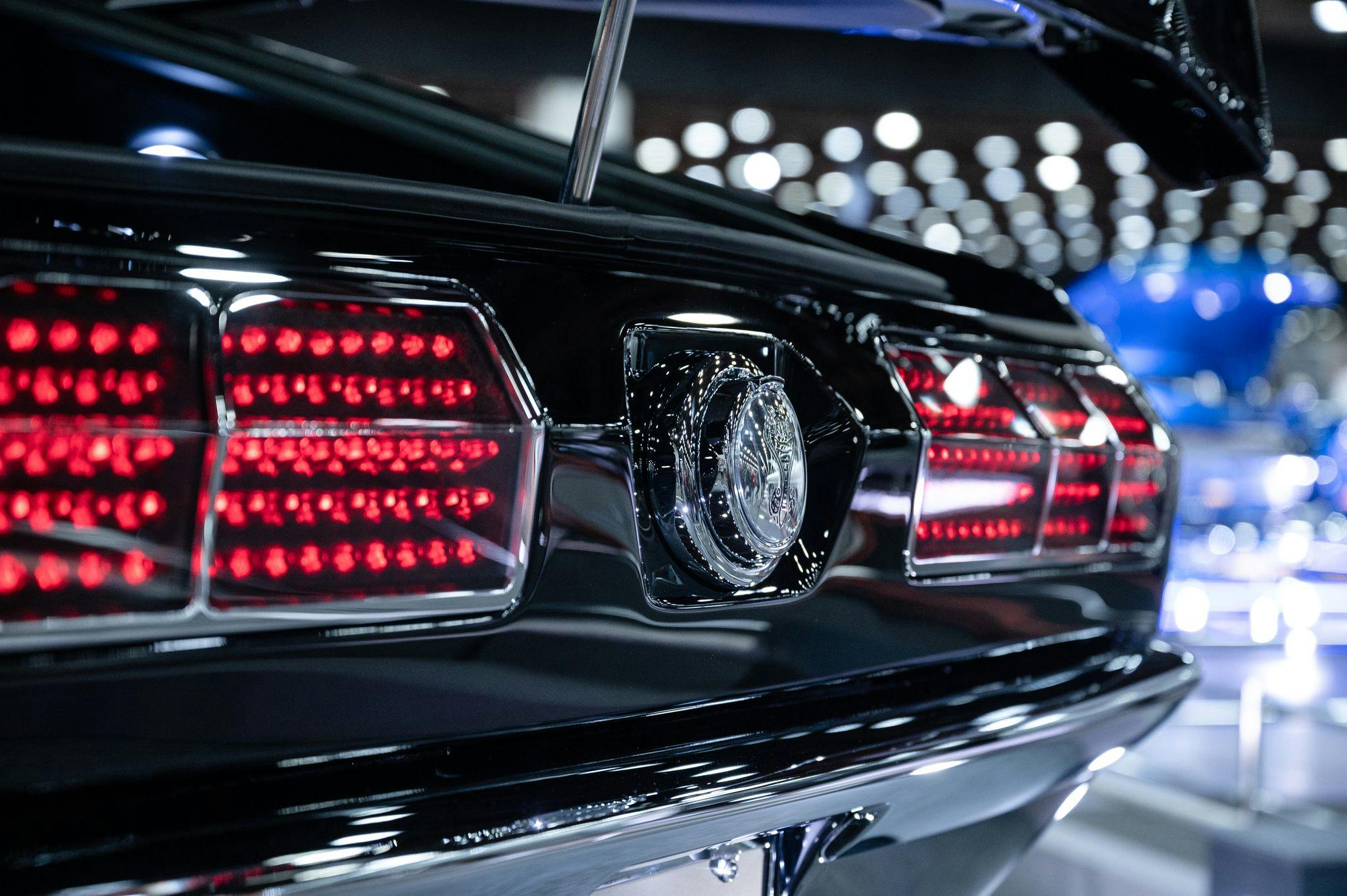
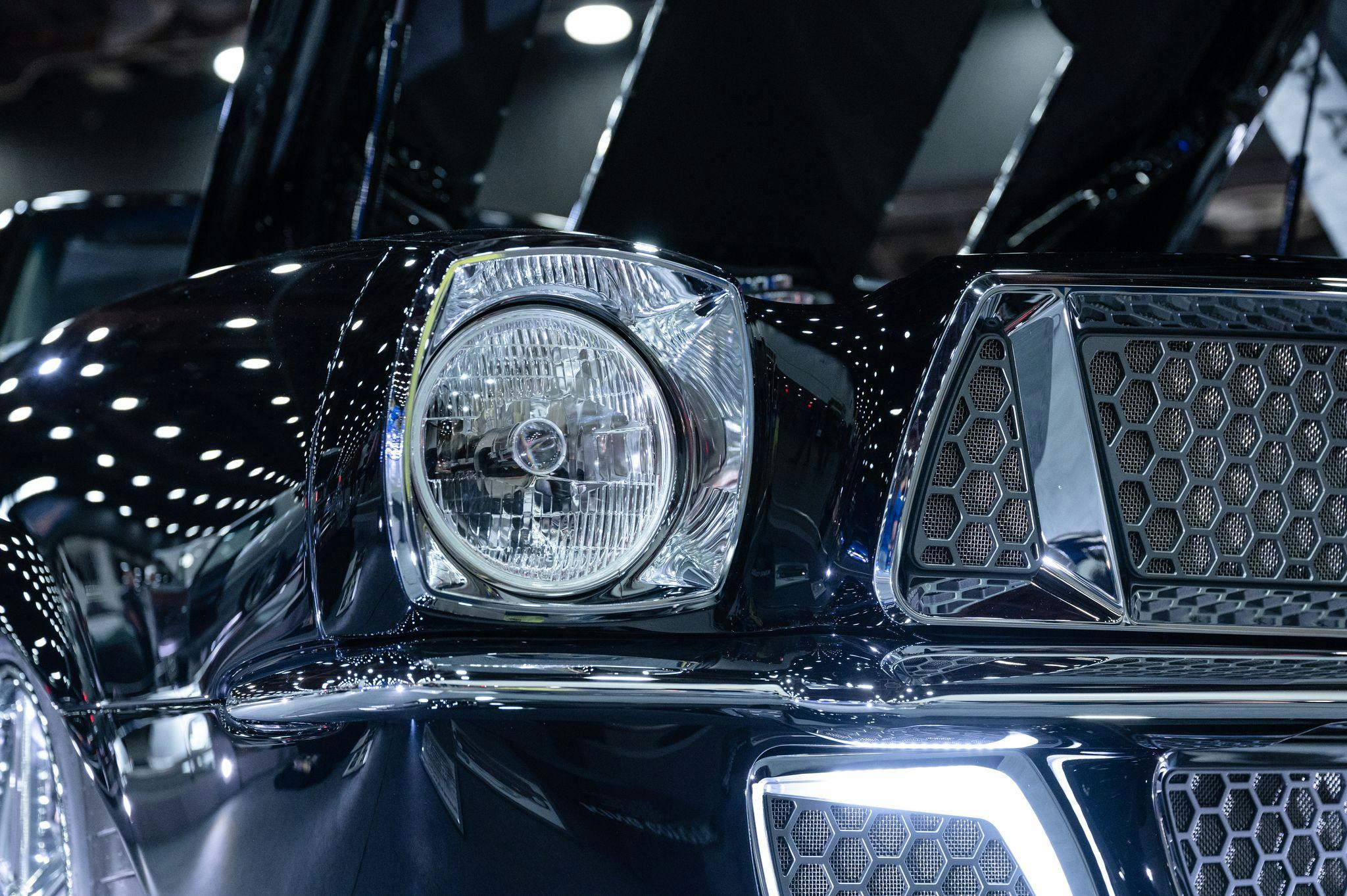
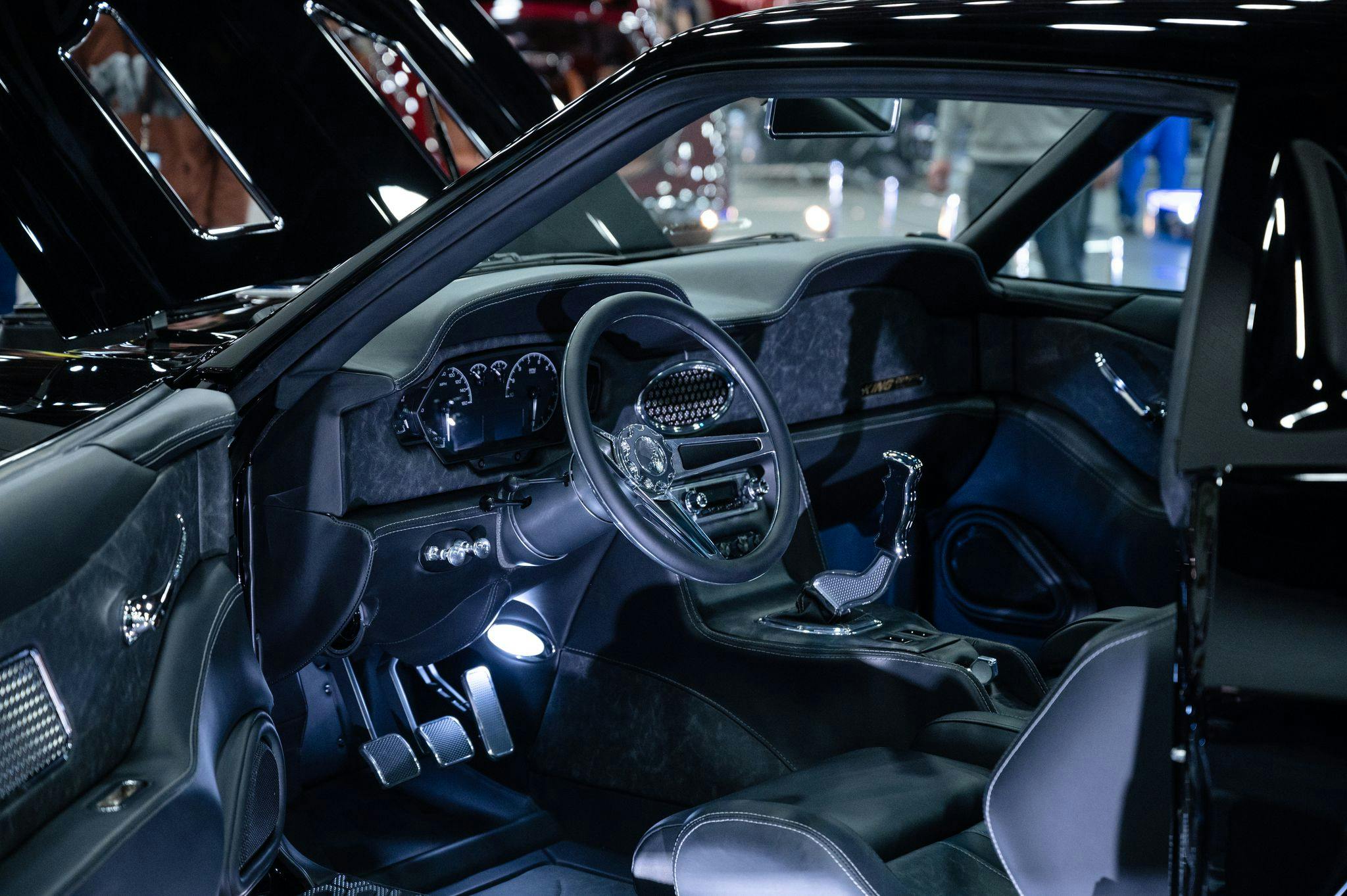
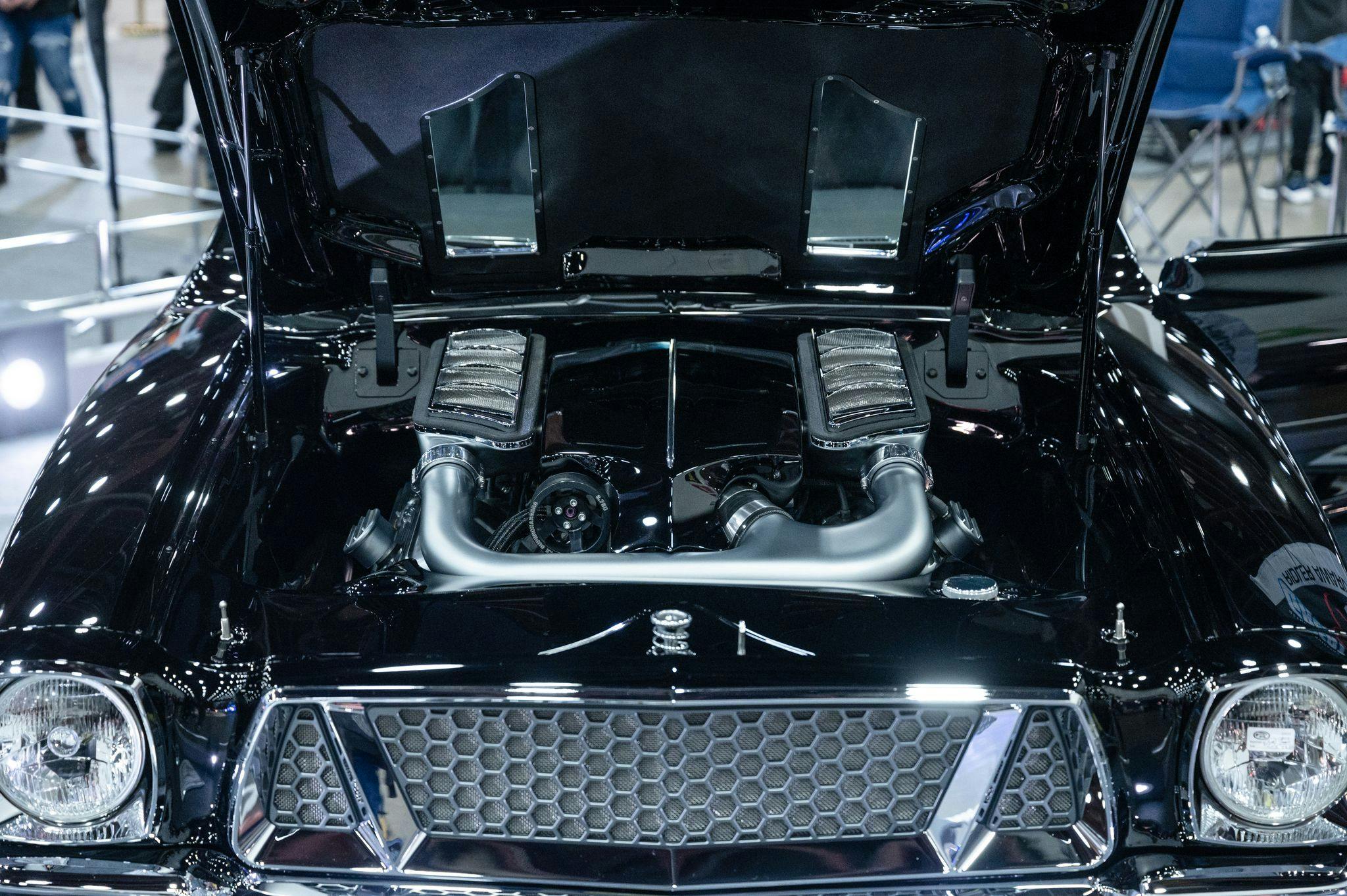








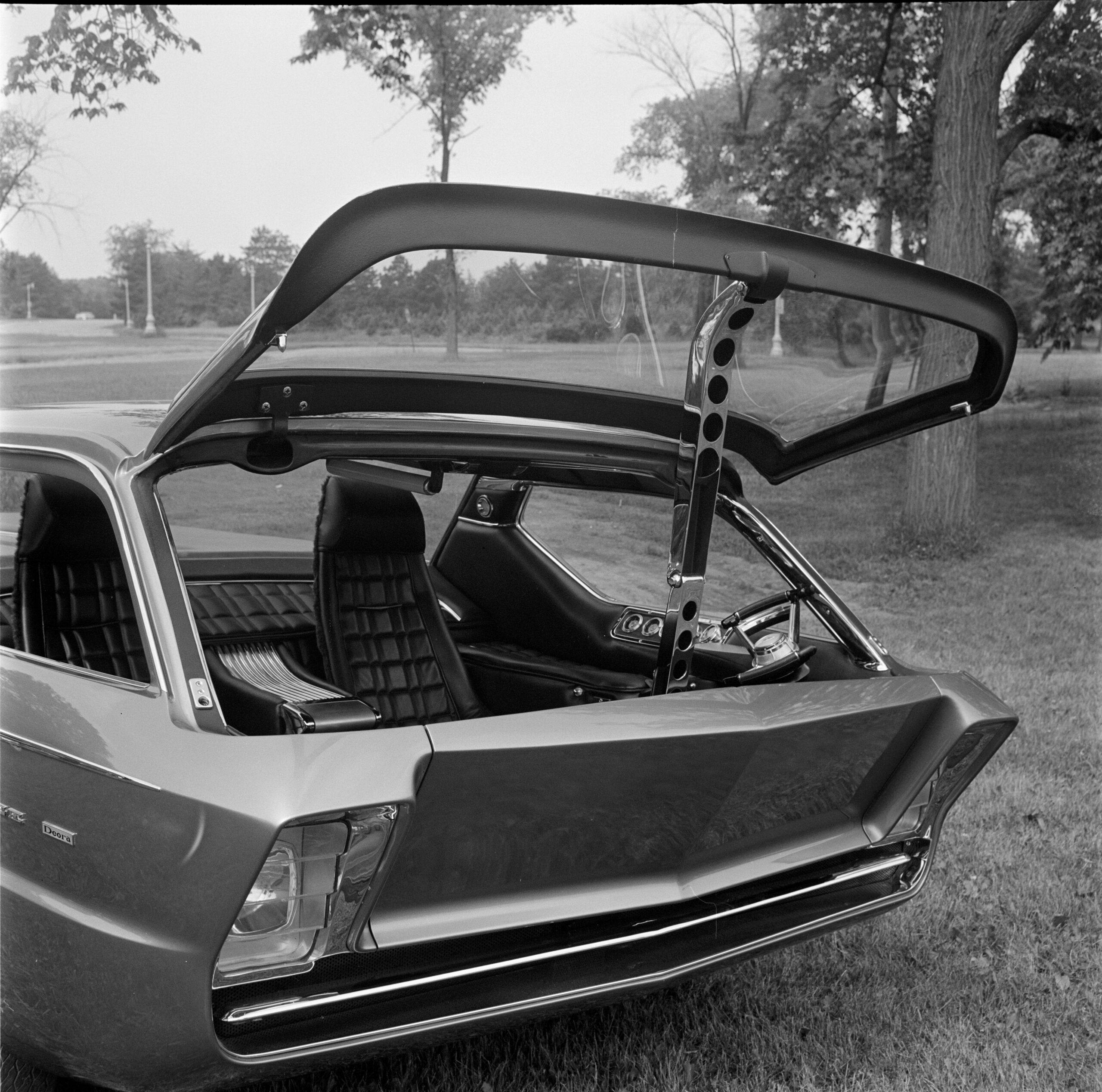
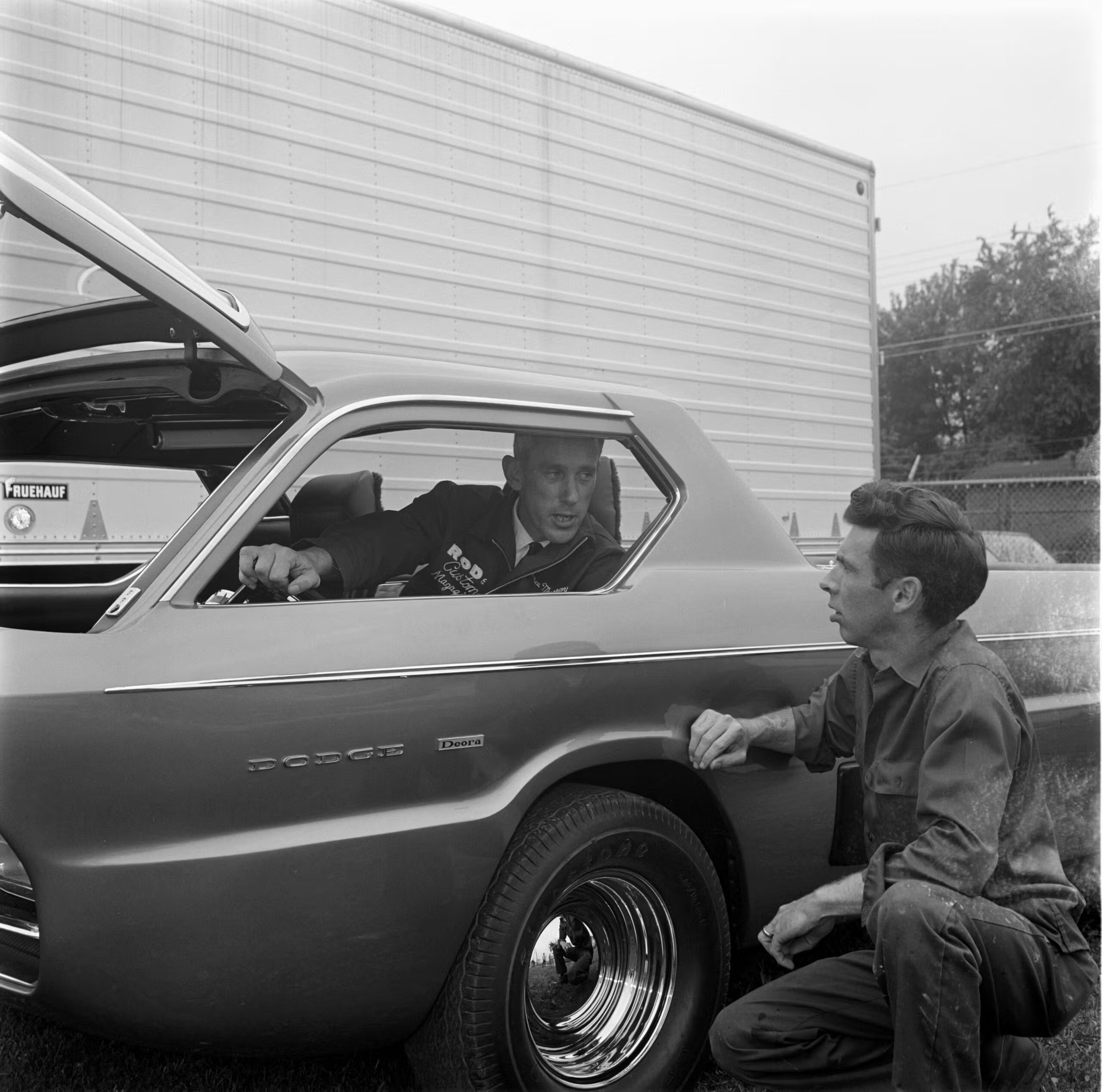
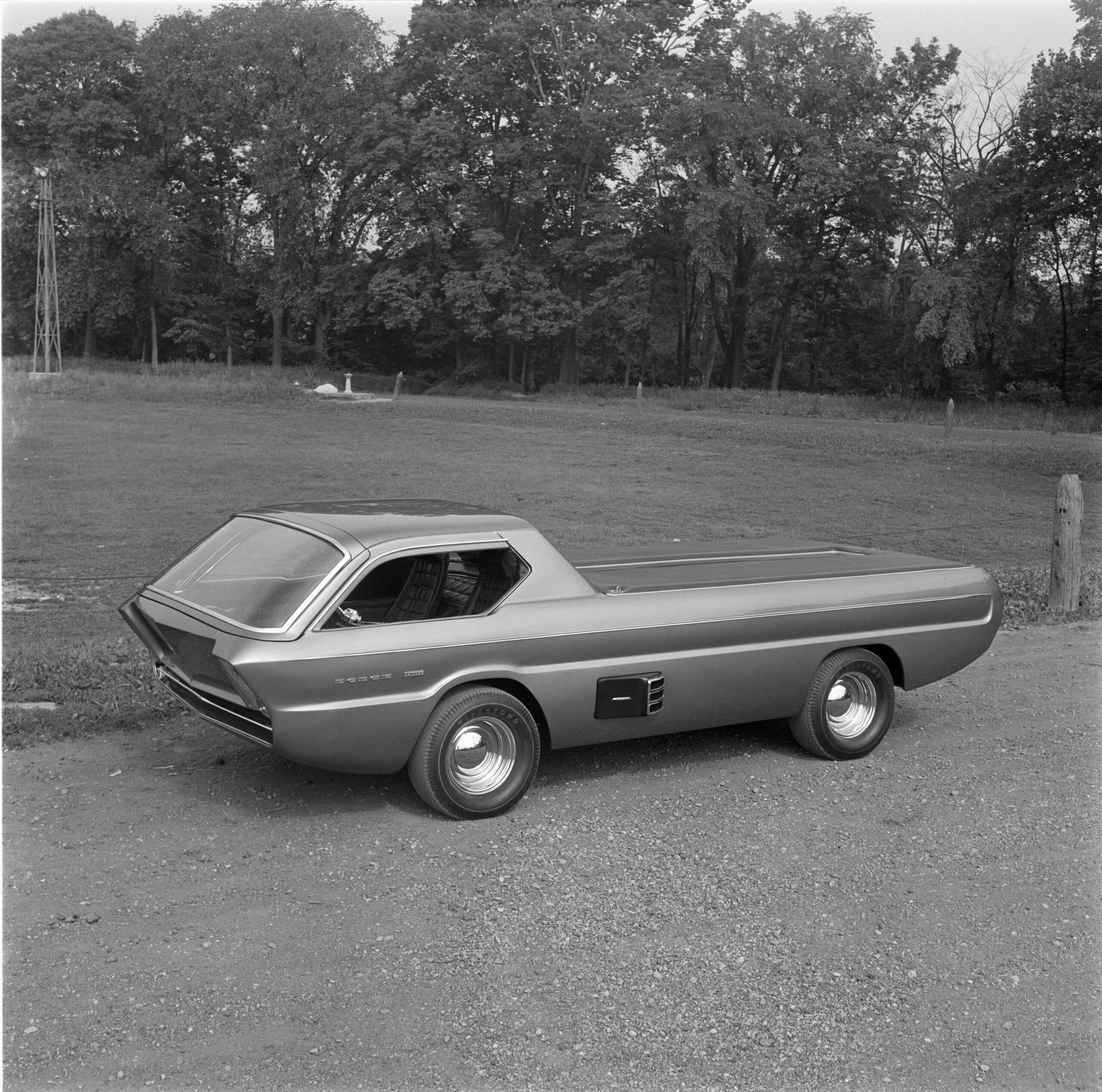







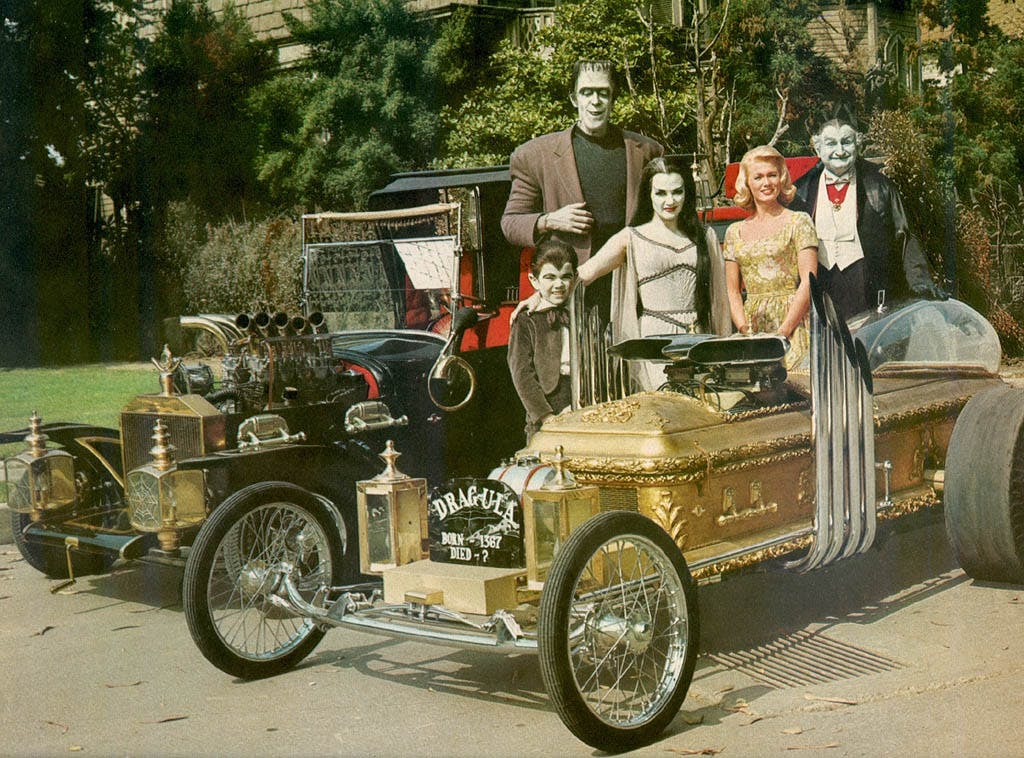





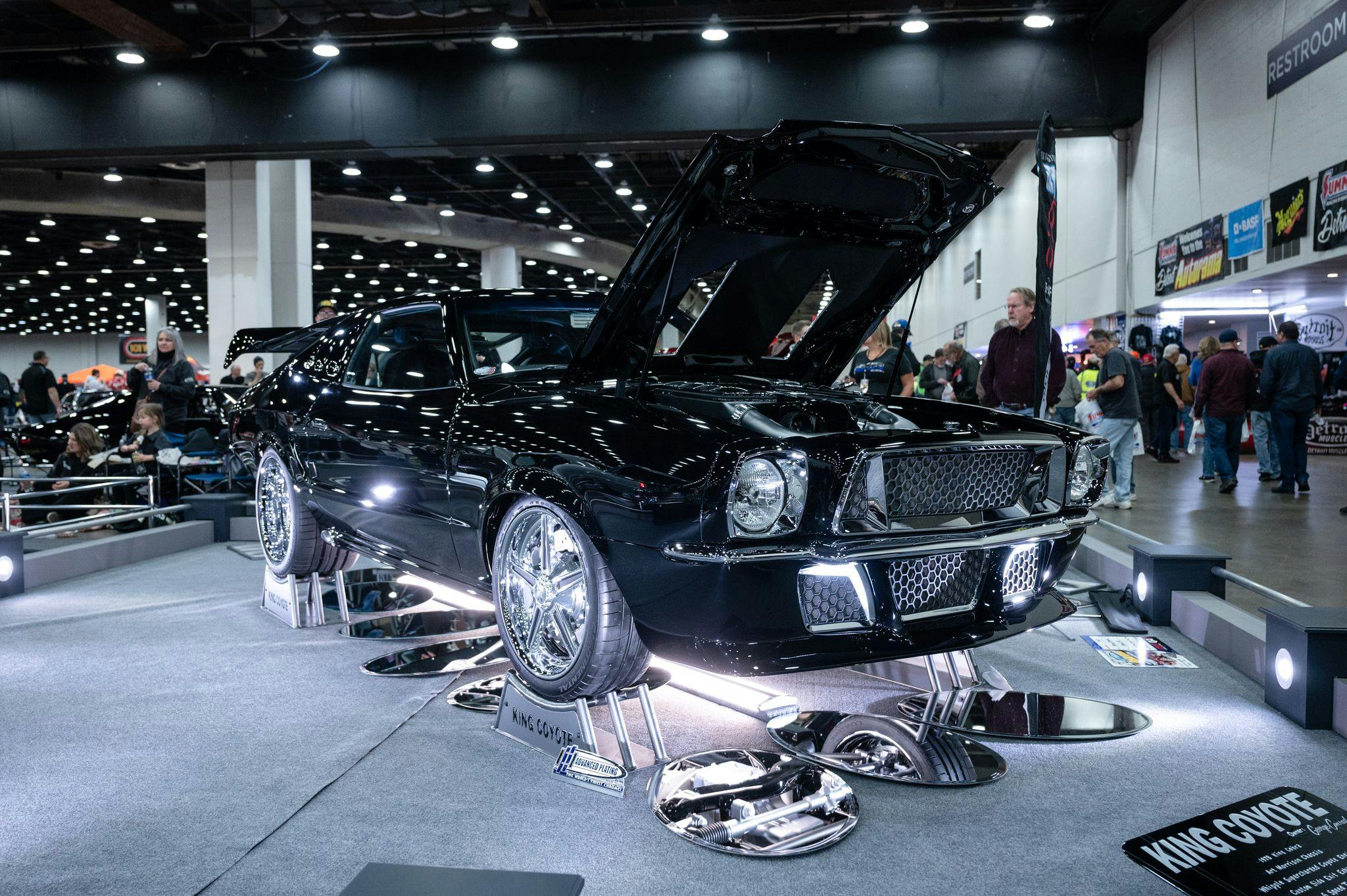
There’s an old saying, “You can’t make a silk purse out of a sow’s ear”. Well, George Conrad’s King Coyote just proved that wrong. I had to keep looking at the pictures to make sure it was a Mustang II. All in all, a fascinating article.
Back in the early 1980s, my girlfriend owned a red 3 door Mustang II Fastback.
I loved that car as much as I loved her.
It’s funny how the Mustang II front suspension lives on in so many cars (or, at least, facets of it)
It’s true that many other people were largely responsible for much of George Barris’ success, and that he had little shame in putting his name first on most anything. But his name drew attention and some of those others drew their own success from association with his. Many Five-Star chefs owe most of outcome of their meals to the sous chefs who sweat it out over the oven, but it’s the name of the head chef that brings the customers in. It’s hard to argue with results, and the Barris reputation indeed produced results and was thus a success (even is to this day).
I can say I had the privilege to work with George Barris. I would like to state up front he was a most amazing and charming man. He was a wheeler and dealer in the Hollywood crowd and made a name for his company and the cars from his shop.
But the cold hard truth was George was not a real body and steel guy. He had ideas and he had the charm to sell them but the cars he is best known from were all designed and built by others.
The Barris that was the real body and steel guy was his brother Sam. Sam could really style a car and make it right. But Sam passed away and George was blessed to have the steel and body men like Jeffries and others from the LA area that filled in for the missing Sam.
Heck one of Georges painters was some guy named Von Dutch.
I loved George but I did have a problem of him taking credit for others work. I would have been ok if he had said it was work from his shop but name the names that hammered the bodies out.
Jeffries was always at odds with George for taking credit for his cars.
Another thing was George often would find a copy of a Batmobile or Munster Coach and he would give them badges to say Barris. The owners were thrilled but George was just claiming more work for his shop.
So while yes George did have a hand in creating these deals and his shop was involved he did not build these cars himself. In fact I have not seen any photos of him building a car since way back as others were doing the work.
Imagine if the producer for the Beatles took credit for Hey Jude? Yes he may have had a roll in recording it but it was others work.
I have always tried to set the story straight on George. It is hard as his charm really made you love the guy. But at the end of the say he made claims that should be corrected to those who really deserve the credit. Right is Right.
Agree – GB was a promotional machine – one could say self-promotional, I suppose – but his claims were exaggerated, and others did the actual work. In context, he was mining Hollywood, which is essentially built on fantasy, drama, glitz & sound-bytes, so his schtick fit right in.
There is nothing about that Mustang II that looks like one to me. This is a good thing. Good article!
In the late ‘60’s I had a bunch of toy cars, mostly Corgi. One of my favorites was the Monkee Mobile. The front of that car was the bomb and the rear was just sexy. You’d look at it the way you look at a kid whose parents you know but can’t quite place: yeah I know the family but can’t figure out where you fit in. GM? Absolutely! Pontiac? Probably. Buick? Maybe.
As a fan of cab-over truck/vehicles like the A100, Jeep FC, Corvair truck, and the Econoline truck, I would love to see a modern take on any of them, but a modern Deora would be a dream come true. Heck, I wouldn’t even care if it was an EV just to have them back. Something about the funky looks and the absolute commitment to function over form just appeals to me.
Search Deora II
As a teenager in Denver I knew I was destined to be an automotive designer, and So Cal and the Art Center were the means to that end. On a trip to visit the Art Center Hollywood Campus I also made a pilgrimage to the Barris shop and sure enough, I spotted the somewhat run down Futura in the back lot. When the Batmobile debuted I immediately knew from whence it came.
Back in the early 1980s, my girlfriend owned a red 3 door Mustang II Fastback.
I loved that car as much as I loved her.
I remember the 60s and all the custom cars. Everything was off the charts crazy in terms of style and design. Yes there are some really good high quality builds these days but they tend to lack the imagination that was in abundance back then.
I’ve never understood the hatred of the Mustang II. The original Mustang was a hopped up Falcon and the Mustang II was a hopped up Pinto. After the bloated ’71-’73 Mustang yachts, I thought it was a refreshing return to it’s roots.
Ping me when it’s time to talk about the 1974 GTO (Nova/Ventura) which was also very cool…